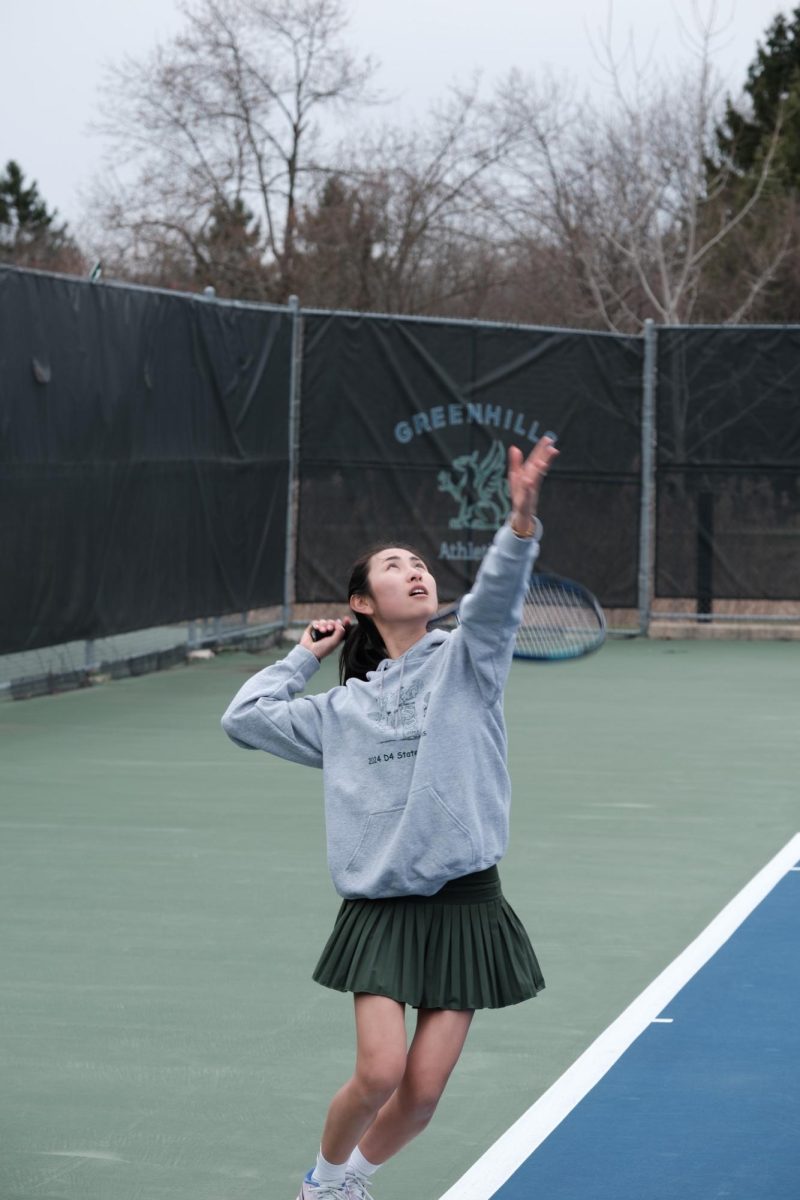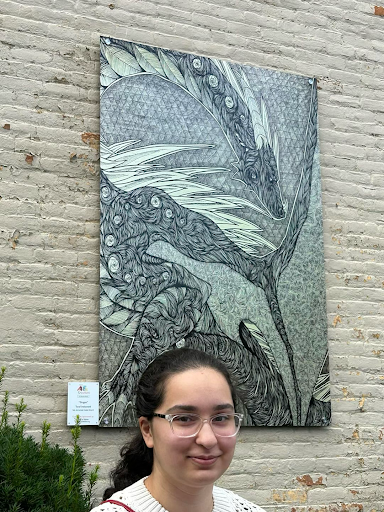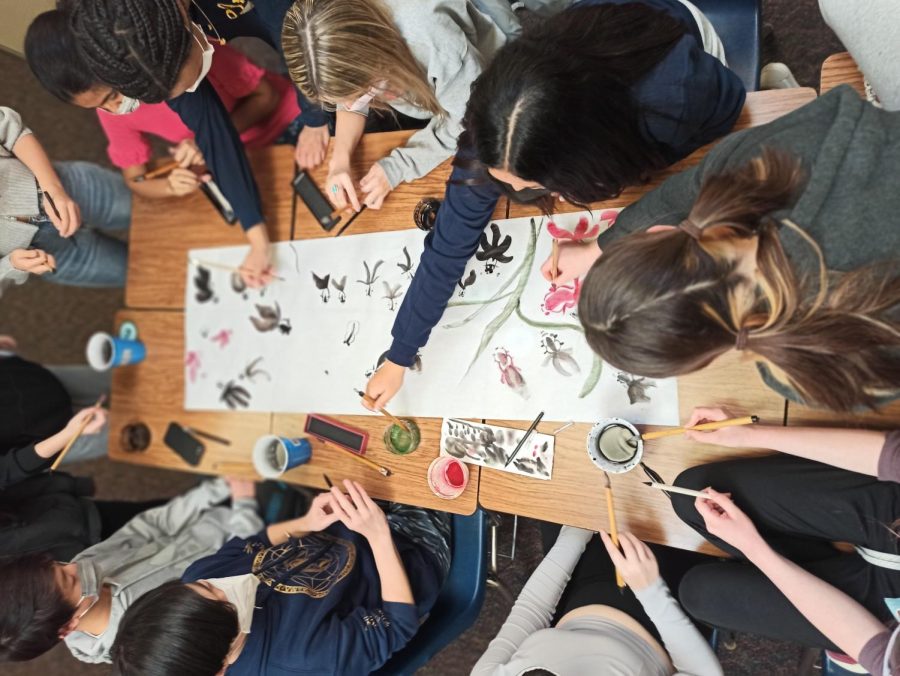Hands on learning
Chinese classes assign art projects to students for the Chinese New Year
Photo Courtesy of Hsiu-Chao Chang
CLASSROOM CALLIGRAPHY “I think if we are to study Chinese culture, the Chinese art is important to study as well because its such an integral part of the culture,” said Emma Zhang ’23. “I really liked being able to learn hands on and being able revert back to arts and crafts in school to learn.”
May 10, 2022
Hoping to make the Chinese classes more interesting, Chinese teacher Hsiu-Chao Chang decided to incorporate more art into the classroom as well as students’ assignments.
Chang tries to connect art projects with topics that the Chinese classes are learning, hoping that it would increase the students’ interests and make the information easier to process. She assigns painting and calligraphy projects regularly, and the students’ artworks get hung up in the hallways for everyone to look at.
The most recent art activity was for the Chinese New Year.
Chang decided to assign different art or calligraphy projects to different levels of classes. She chose to incorporate traditional Chinese watercolor into the students’ art projects. Chinese 1 students’ projects were landscapes. Chinese 2 students worked on fish paintings. Chinese 3 students painted tigers for the Year of Tiger. Chinese 4 and AP Chinese worked on the same project, which combined Chinese calligraphy as well as art: each student chose a Chinese word that represents what they want this year to be like, and they painted animals using watercolor.
These projects were designed to not only make students’ learning experience more fun but also help them know more about the Chinese culture and language.
“The students really enjoy learning about traditional Chinese arts, and they get to explore the culture by doing these art projects,” said Chang. “There are also a lot of flexibilities on what they want to work on.”
The students in Chinese classes have much positive feedback for their experience doing the art projects. For example, the students who did Chinese calligraphy, like that they are writing Chinese artistically and that they can memorize the words better.
“For my project, I decided to paint a swan, and I chose “Fang” as my word of the year, meaning release and moving on,” said Annie Stone ’23, a Chinese 4 student. “I like working on my art project a lot. It did not only feel like I was doing an assignment, but it also felt like I was creating art.”
It is not just an assignment, it is also art.
When you walk past the hallway next to the Chinese classroom, you can always see students’ artworks exhibited on the wall, and each one is different from the others. These artworks not only decorate the building, but they also represent the students’ learning of their classes.
“I always walk through that hallway in order to get to my office,” said Cora Chester, associate director of college counseling. “It just makes my mood better to see those beautiful artworks created by the Chinese class students. They demonstrate these students’ artistic talents as well as how much they have learned from their classes.”
Art projects are involved in other subjects, not just Chinese classes, with the same purpose–to interest students to learn, bring out their artistic abilities, and deepen their understanding of the classes’ material.


















